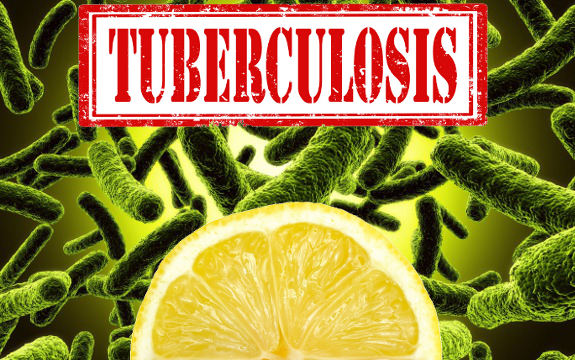Study Shows Vitamin C Battles Antibiotic-Resistant Tuberculosis

 Tuberculosis (TB) is making a strong comeback, mostly among the less well-off financially and more immune challenged. This TB has learned to overcome most of the current antibiotics that once dominated, with the end result being antibiotic-resistant TB which can’t be controlled. It’s termed multi-drug resistant tuberculosis, or MDR-TB.
Tuberculosis (TB) is making a strong comeback, mostly among the less well-off financially and more immune challenged. This TB has learned to overcome most of the current antibiotics that once dominated, with the end result being antibiotic-resistant TB which can’t be controlled. It’s termed multi-drug resistant tuberculosis, or MDR-TB.
Among those actually infected, there are around a third of whom which don’t manifest symptoms, but are actually carriers. And the this multi-drug resistant TB bug is getting around.
The World Health Organization (WHO) recorded almost 9 million cases of TB worldwide in 2011. Of those, almost 1.5 million died. Currently, it’s estimated that 650,000 people have MDR-TB. An even worse version is XDR-TB (extensively drug-resistant TB), which has infected close to 10% of the MDR-TB population.
A Study’s Surprising Results on Drug-Resistant TB with Vitamin C
A group of researchers at the Albert Einstein College of Medicine in NYC stumbled upon a potential treatment for both MDR-TB and XDR-TB while attempting to study the mechanics of how the TB bacterium becomes resistant to the normal protocol of first line TB antibiotics.
The study was in vitro (in glass), so they created a TB bacteria culture to see how that bacteria would resist isoniazid, a premier first line TB antibiotic. Dr. William Jacobs, a PhD microbiologist, and his team had observed that isoniazid-resistant TB bacteria lacked the mycothial molecule.
Read: Big Pharma Fails to Tackle World’s Largest Pandemic – TB
Dr. Jacobs said:
“We hypothesized that TB bacteria that can’t make mycothiol might contain more cysteine, an amino acid. So, we predicted that if we added isoniazid and cysteine to isoniazid-sensitive M. tuberculosis in culture, the bacteria would develop resistance. Instead, we ended up killing off the culture— something totally unexpected.”
Surprised yet now curious and willing to expand their study, the researchers decided to try some other experiments. Thinking the cysteine acted as a reducing agent to damage DNA via free radical oxidation, they decided to use vitamin C as a reducing agent instead of cysteine, and they got the same result.
This evolved to using only vitamin C, which not only killed the normally susceptible to isoniazid TB bacterium, but also the multi-drug resistant MDR-TB and XDR-TB strains, which are super resistant.
To justify human trials (in vivo) with vitamin C for multi-drug resistant TB, the researchers embarked on determining the molecular reasons vitamin C handled the petri dish bacterium.
After further research, it was determined that vitamin C caused iron to react with other molecules, creating a reactive oxygen type that was too much for the MDR-TB and XDR-TB strains that normally withstand all antibiotics. Dr. Jacobs offered this conclusion:
“We … now have a rational basis for doing a clinical trial…vitamin C is inexpensive, widely available and very safe to use. At the very least, this work shows us a new mechanism that we can exploit to attack TB.”
Vitamin C is widely available, but it’s unlikely that the AMA and Big Pharma will allow its use. Instead, they may use Dr. Jacob’s fine work uncovering the mechanics of vitamin C to create a patentable pharmaceutical TB drug.

I take vitamin D3 and I feel it protects my lungs from viruses.